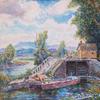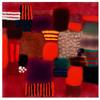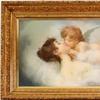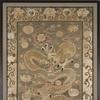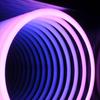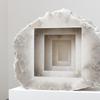SCULPTURE: Muñoz, Schütte, Trockel, and Warren at Skarstedt
- NEW YORK, New York
- /
- October 27, 2015
Skarstedt has announced Sculpture: Muñoz, Schütte, Trockel, and Warren, a group exhibition examining figuration in European sculpture. Featuring select works by artists Juan Muñoz, Thomas Schütte, Rosemarie Trockel, and Rebecca Warren, who each use sculpture and the body to reflect on emotion and man’s existence in the world, the exhibition will be on view at Skarstedt Chelsea (550 West 21st Street) from November 7 through December 19, 2015.
The suspended male figures of Muñoz’s One Laughing at the Other abound with dynamism. One individual leans back and the other leans forward, while both appear to be laughing uproariously. Laughing faces molded naturalistically emote the energy of movement while remaining still, recalling the Shakespearean oxymoron of ‘heavy lightness’. Muñoz’s work captures the paradox of ‘loud silence’ as unheard conversations fill the void.
Warren’s human-height, bronze sculpture, Large Concretised Monument to the Twentieth Century, explores the female figure with both recognizable and amorphous forms. Feminine curvature is exaggerated through oversized, bulbous elements attached to a slender figurine with outstretched arms. The work references twentieth-century sculptural art—nodding to artists like Degas, Rodin, and Picasso—yet subverts the cliché of the female nude with a bold, defiant figure.
With Stahlfrau Nr. 4, Schütte interprets the human condition and its complexities using a cast steel figure of a female nude. Contrasting with Warren’s commanding vertical form, Schütte’s roughly molded subject appears curled in a ball on her side, her overlapping features bearing down on a steel table. Schütte yields to the unspoken language of the figure, claiming, “I would rather talk with my hands and through forms and let these creatures live their own lives and tell their own stories.”(1)
The resting state of Stahlfrau Nr. 4 resonates with Trockel’s bronze sculptures. From a listless deer lying on its side to a small dog curled asleep, Trockel’s realistic animal figures appear unexpectedly dormant, confronting the viewer with questions of mortality. With a party hat adorning the dog and the series title, “creature of habit,” Trockel references our frequent humanization of animals, assigning human emotions and tendencies to them.
Skarstedt’s grouping of sculptures considers the medium’s inherent contradiction: striving to capture life in a static form. Through their relationship to the gallery space, the viewer and each other, these works encourage a recalibration of our surroundings. Existing in the place between introversion and extroversion, the exhibition allows these objects breathing room.



